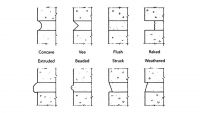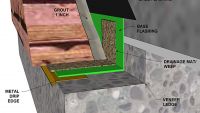AIA AGREEMENTS AND GENERAL CONDITIONS DOCUMENTS
By Paul Potts
The use of the American Institute of Architects’ (AIA) standard form construction agreements have been the focus of criticism for several years. The principal complaint has been that the AIA has (a) used their authorship of these documents to reduce their liability for claims of negligence and (b) otherwise clarify out of existence traditional duties that have been thought to be the responsibility of the architect-engineer but not specifically stated in the contract documents.
From another point of view, one must weigh the harm of an architect authoring their own contracts, and general conditions document against the positive benefits derived from said architect having a well-researched, continuously updated, integrated complement of contract documents available to consult. This option is an alternative to relying on private attorneys to create original contract documents for each project full of terms and conditions inviting litigation.
The AIA speak for themselves in this regard:
The AIA Documents Committee develops AIA Contract Documents through a rigorous process that includes input from contractor organizations, owner groups, architects, legal and insurance counsel, and others involved in the construction process. AIA Contract Documents are periodically updated to reflect changes in the design and construction industry, as well as the law. As courts have tested the agreements over time, users may rely confidently on the meaning and interpretation of the contract terms. These agreements provide a solid framework for relationships among the owner, architect, contractor, and other project participants. https://www.aia.org/articles/210481-selecting-the-right-owner-architect-agreement
CHANGE ORDERS
G701–2017 Change Order:
AIA Document G701™-2017 is used for implementing changes in the work agreed to by the owner, contractor, and architect. Execution of a completed G701 indicates agreement upon all terms of the change, including any changes in the contract sum (or guaranteed maximum price) and contract time. The form allows for signatures of the owner, architect, contractor, and a description of the change. https://www.aiacontracts.org/contract-documents/155036-change-order
Additive Change orders may result from (a) proposal requests initiated by the owner to expand the project, (b) errors and omissions by the architect-engineer, (c) hidden conditions, (d) construction change directives, or (e) claims by the contractor or other party. Deductive change orders may result from value-added proposals by the contractor.
G709™ – 2018 Proposal Request
The architect may initiate a change order process by issuing a G709–2018 Proposal Request to reflect the owner’s desire to make post-bid changes in the work. A proposal request is well-documented with a description of the work and materials needed but is not an order to proceed until the price is accepted and a change order is issued.
G714–2017 Construction Change Directive
When time is of the essence, the architect working with the owner may issue an AIA Document G714–2017 Construction Change Directive, which directs the contractor to commence extra work on a time and material basis or another open-ended basis. A Construction Change directive is issued to expedite the project and is not a change order because the price for the work is not yet confirmed.
Errors and Omissions and Hidden Condition Change Orders
Change orders may result from errors and omissions by the architect-engineer. Mistakes by architects are common and can be corrected when the architect issues a G709–2018 Proposal Request to the contractor for pricing, and later a change order is written.
Hidden Conditions are not shown on the drawings and are not obvious from visual observation of the site or prebid inspection of an existing building. For example, a peat bog was discovered in the middle of a building site that was not revealed by prebid soil borings and thus not indicated on the drawings. Since the condition was not visible from the surface and was not shown on the drawings, the contractor was entitled to a change order to remove the peat, an imperfect soil for construction.
Deductive Change Orders for Value Added Work and Materials
There are projects where final bids exceed the owner’s budget, and the architect and construction manager solicit proposals from the contractors seeking prices for products or work that will maintain the value to the owner but cost less than what is reflected in the design documents. These are called “value-added” proposals. If accepted by the architect and owner, a value-added proposal may become deductive change orders reducing the cost of the project to fit the budget.
A201- 2017 General Conditions of Contract:
General conditions will differ depending on the construction delivery method. For example, General Conditions of the Contract for Construction General Contractor Edition (A201- 2017) or General Conditions of the Contract for Construction, Construction Manager as Adviser Edition (A232-2009). General conditions are incorporated by reference into the owner-contractor agreement and owner-architect agreement. Whatever is stated in the general conditions has the same implication as everything that is stated in the actual signed construction agreement. The construction manager, contractor, and subcontractors should request a copy of the general conditions and read them thoroughly as they read the owner-contractor agreement.
The general conditions are an integral part of the contract for construction for a large project, and they are incorporated by reference into the owner/contractor agreement. They set forth the rights, responsibilities, and relationships of the owner, contractor, and architect. Though not a party to the contract for construction between owner and contractor, the architect participates in the preparation of the contract documents and performs construction phase duties and responsibilities described in detail in the general conditions. AIA Document A201™–2017 is adopted by reference in owner/architect, owner/contractor, and contractor/subcontractor agreements in the Conventional (A201) family of documents; thus, it is often called the “keystone” document. https://www.aiacontracts.org/contract-documents/25131-general-conditions-of-the-contract-for-construction
Claims and Disputes.
Claims and Disputes for additional costs or extension of time as defined by A201- 2017 General Conditions of the Contract ARTICLE 15 may result in a change order.
A201- 2017 General Conditions of the Contract § 15.1 (claims defined)
A Claim is a demand or assertion by one of the parties seeking, as a matter of right, payment of money, a change in the Contract Time, or other relief with respect to the terms of the Contract. The term “Claim” also includes other disputes and matters in question between the Owner and Contractor arising out of or relating to the Contract. The responsibility to substantiate Claims rests with the party making the Claim. https://www.aiacontracts.org/contract-documents/25131-general-conditions-of-the-contract-for-construction
Following provisions of A201- 2017 General Conditions of the Contract for Construction General Contractor Edition and A232- 2009 General Conditions of the Contract for Construction, Construction Manager as Adviser Edition, the Contractor must first submit claims against the architect or the owner to the first finder of fact, the Initial Decision Maker.
The Initial Decision Maker
The architect is often appointed as the initial decision maker (see General Conditions Article 1.1.8 Initial Decision Maker). The architect, performing their role as the Initial Decision Maker, is cautioned in the documents to be fair to all parties when resolving claims and show partiality to none. It should be noted that the architect’s services as IDM entail no cost to the claimant, and the claimant is entitled to mediation or binding dispute resolution if they are not satisfied with the decisions of the IDM. Refer to ARTICLE 15 Claims and Disputes in the general conditions.
It is best for all parties to resolve claims at the lowest level possible. Professional dispute resolution and arbitration entail serious costs and require parties to hire attorneys and pay for their services regardless of the dispute outcome.
If it is the architect, the Initial Decision Maker has been part of the design team. Having attended construction meetings at the site will better understand the issues involved in the claim than a third party without the same experience. Suppose a third party is chosen as the IDM. In that case, they will have to acquire copies of all documents that the architect already has in their possession and spend a lot of time interviewing contractors to understand the issue in dispute. The parties will share these costs with the claim.
Change Orders
Change orders are the end of the process, not the beginning. Once the owner and the contractor sign the change order, it becomes part of the contract as though it were issued before initial bids were taken.
This article represents the informed opinion of the author. It is intended for general information purposes only and does not constitute legal advice. The reader should consult with legal counsel to determine the complex interaction of laws, suggestions, and illustrations with specific situations.
About the Author
Paul Potts has 24-years' experience working as an owner's and architect's representative during construction and working as an estimator and clerk of the works for a mechanical contractor on large manufacturing projects. I have edited MasterSpec specifications for SpecGuy Incorporated. Since my retirement from active field work, I have written several articles appearing in national magazines on subjects of contract relationships and construction materials including articles of your specific trade of masonry.
















